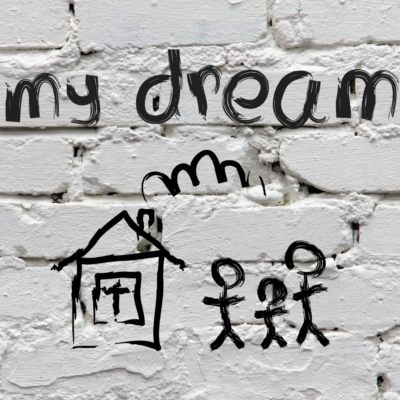 It’s a quiet and chilly morning in a Walmart parking lot. A brown Toyota 4Runner, in need of repairs, is stuffed with the personal belongings of a single mother and her eight-year-old boy. Terri and Bobby were facing another day without a roof over their heads. Terri is going to work and helping Bobby get ready for school. She grabs their knapsacks. They walk into Walmart to wash up and get some food. Like my mother, Terri would at times not eat so her boy could. How did they end up in this all-too-familiar situation? Sadly, many single mothers suffer.
It’s a quiet and chilly morning in a Walmart parking lot. A brown Toyota 4Runner, in need of repairs, is stuffed with the personal belongings of a single mother and her eight-year-old boy. Terri and Bobby were facing another day without a roof over their heads. Terri is going to work and helping Bobby get ready for school. She grabs their knapsacks. They walk into Walmart to wash up and get some food. Like my mother, Terri would at times not eat so her boy could. How did they end up in this all-too-familiar situation? Sadly, many single mothers suffer.
Terri escaped an abusive and violent relationship with the father of her child, a veteran who served two tours in Afghanistan and who struggled with undiagnosed post-traumatic stress disorder. He self-medicated with alcohol and other substances. He would come home intoxicated and full of rage, which led him to beat Terri. During one of these episodes, he shot the family dog.
This incident was the last straw, and after he passed out, Terri packed her 4Runner with as much as she could and left with her son. She had no relatives she could turn to, so Terri drove as far away as possible, ending up on the outskirts of Cleveland, Ohio.
Terri nearly used up all her money. She needed a job, so a nearby fast-food restaurant provided that desperately needed source of income, meager as it was. She managed to enroll Bobby in a nearby school.
Terri and Bobby slept in her SUV at the Walmart parking lot. This depressing routine continued for a few weeks until the school’s social worker called her in for a meeting about her boy. Bobby had inadvertently revealed he was homeless. The social worker told Terri there was a local nonprofit that could help her find temporary shelter and, ultimately, affordable housing. This referral gave Terri the first tool she could use to overcome homelessness. There was a slew of other obstacles she would face and get through to succeed on her journey.
She went to the nonprofit and asked for help. They connected her to a certified licensed clinical social worker. The social worker helped her deal with the trauma she and her boy experienced. The organization had programs that helped families get back on their feet by connecting them to resources and other agencies that could help Terri and her boy heal from the trauma they experienced, improve her job skills, and find afterschool childcare and housing.
The agency offered shelter and access to affordable housing, and it offered counseling, budgeting classes, and other resources to help families. This agency was also affiliated and collaborated with “Do Good Cleveland” to access resources for their clients.
The after-school childcare allowed Terri to pursue a certified nurse’s aide training program. She had dreamt of becoming a nurse, but marriage and motherhood derailed that plan. Now, she had the freedom and help to start that journey again. The starting pay was $16.93 per hour, which is $35,214 annually. This wage would nearly double what she was making. However, this was less than 50% of the area median income in Cleveland, which was $94,000 annually.
The average rent in Cleveland is about $1,301 monthly. Terri now faced being “cost-burdened.” Moreover, according to the National Low Income Housing Coalition’s Out of Reach 2023 Report, Ohio’s fair market rent for a two-bedroom apartment is $993 per month. An FMR for a two-bedroom apartment in the Cleveland metro area is $998 per month. To afford this, Terri would have to earn a housing wage of $19.19 per hour and have an annual salary of $39,920.
The National Low Income Housing Coalition defines housing wage as an estimate of the hourly wage full-time workers must earn to afford a rental home at fair market rent and utilities without spending more than 30% of their income. Terri researched this with the help of her social worker. Terri discovered if she only earned the Cleveland’s minimum wage of $8.80, she would have to work 76 hours per week, the equivalent of nearly two-full time jobs. Luckily, she was making more than that but still not enough. How would Terri resolve this new obstacle? She asked her social worker, who said she could overcome this in several ways.
Terri could apply for a Cleveland HUD “choice voucher” program, commonly known as Section 8 housing, but the waiting list was closed to new applicants. She could apply for an apartment whose owner participated in Cleveland’s tenant-based rental assistance program. This seemed like the most viable option for Terri. Her social worker referred her to United Way of Greater Cleveland, who could help with the application process and find property owners who took part in this program.
She now faced an unforeseen problem: some landlords engaged in “source of income discrimination(SOID),” so she needed help identifying property owners who did not engage in this inequitable and prejudicial practice.
SOID occurs when a landlord refuses to accept a person’s legal source of income. For instance, some legal income sources include investment income, HUD choice vouchers, disability payments, child support, alimony, spousal maintenance, foster care subsidies, Social Security, and public assistance. Cleveland landlords can engage in this practice, and over 90% of renters are denied housing because of this practice.
There is hope; as of 2021, 18 states, more than 90 cities and counties, and Washington, D.C., have enacted laws across the nation that outlaw such practices. Cleveland fair housing advocates have introduced similar legislation so far without success. Terri was able to find affordable housing through the Cleveland Housing Authority.
Terri now had to sustain this housing and the other beneficial resources she had received through the help of the nonprofit agency. The agency helped her apply for Temporary Assistance for Needy Families, Supplemental Nutrition Assistance Program, and Medicaid. To maintain these benefits, she had to be careful about how much money earned or she would face another stumbling block, the benefits cliff effect.
The benefits cliff effect happens to the working poor who are eligible for programs like SNAP (food stamps), Medicaid, the Earned Income Tax Credit, Temporary Assistance to Needy Families, and subsidized public housing. When they reach a point where a one-dollar increase in their hourly wage can significantly reduce benefits, the face a benefits cliff. The outcome is that the added dollars will not make up for the loss of food stamps, childcare, or other benefits designed to help people in poverty or near poverty.
Terri’s social worker explained this to her and encouraged her to take night courses to become a licensed practical nurse. Terri carefully tracked her earnings to stay far away from the cliff and is pursuing a nursing career.








